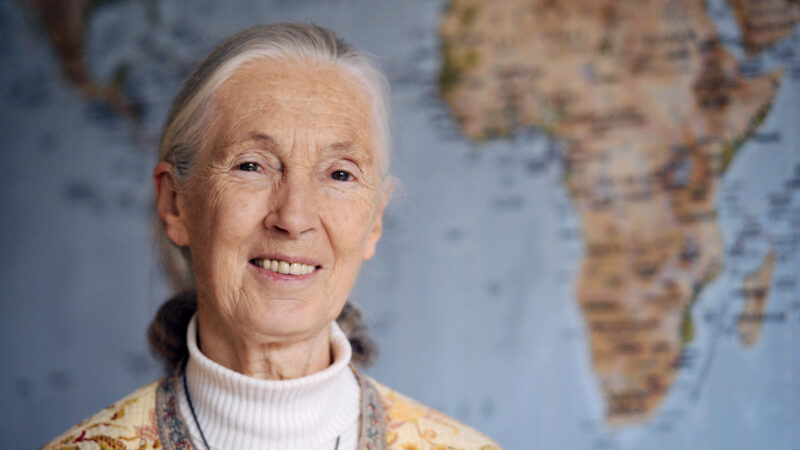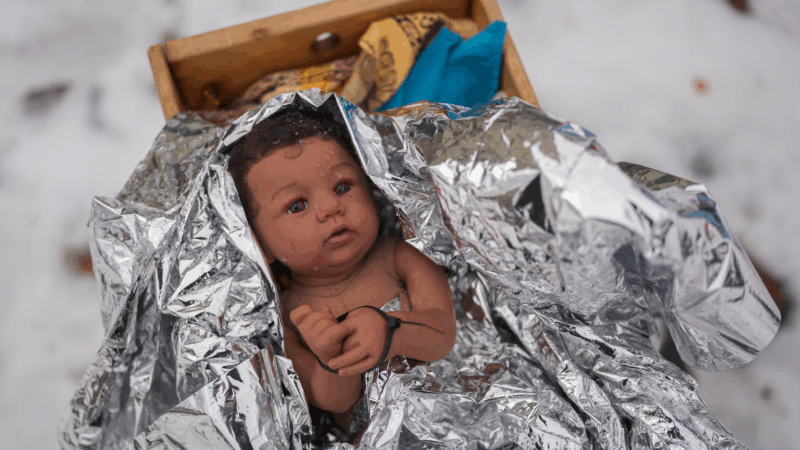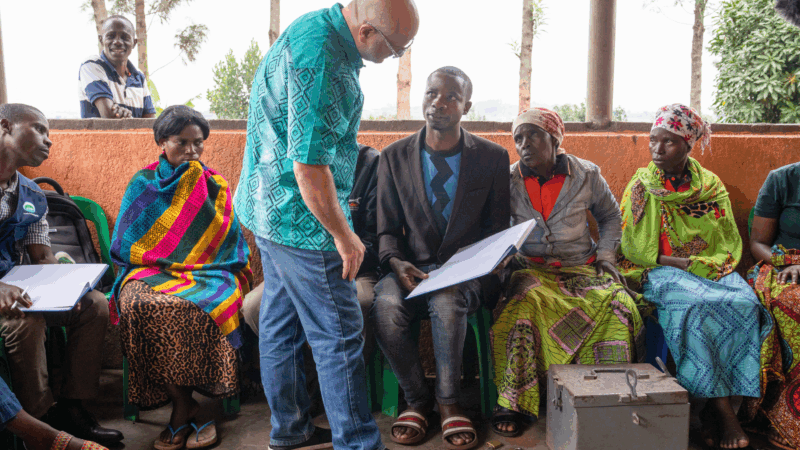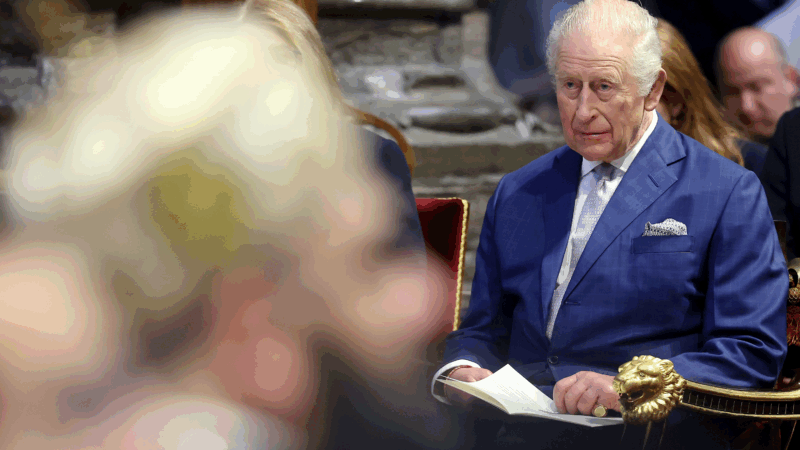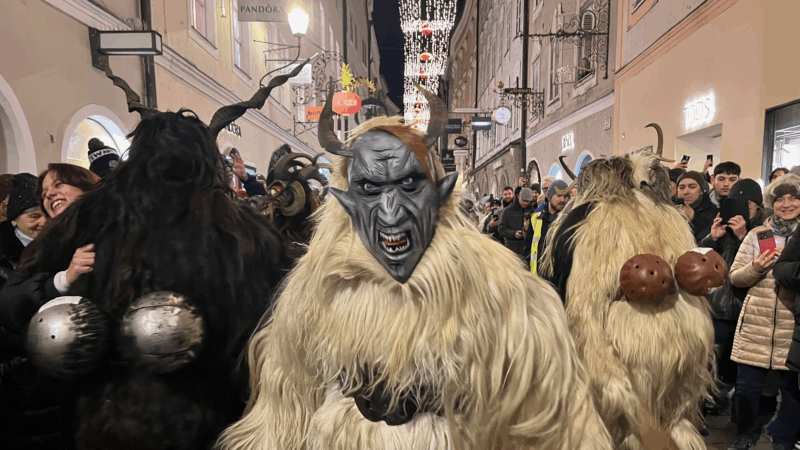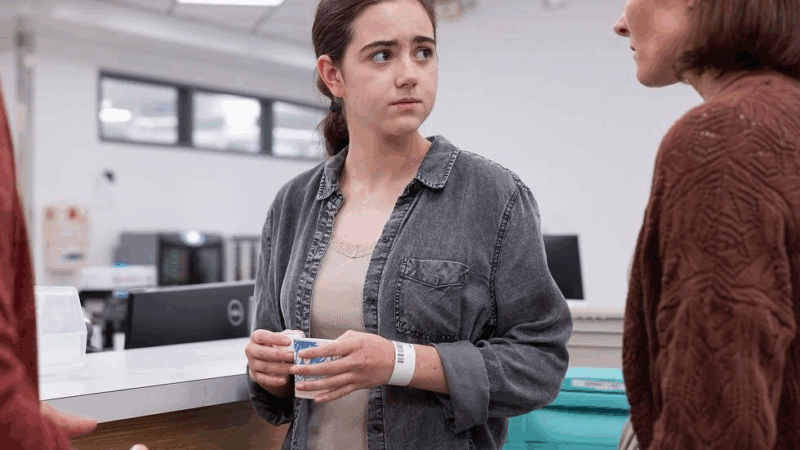Jane Goodall, legendary primatologist, has died at age 91
Jane Goodall, a scientist whose studies of wild chimpanzees made her a household name, has died at the age of 91, according to an announcement posted by the Jane Goodall Institute.
Chimpanzees seemed to accept Goodall as one of their own, and the public was fascinated by both her easy familiarity with the creatures as well as her groundbreaking discoveries that showed just how much chimps are like humans.
“They kiss, embrace, hold hands, pat one another on the back. They show love and compassion, and they also show violence and have a kind of primitive warfare,” Goodall said. “It’s because the chimpanzees are so like us that we can then say, ‘What makes us different? What makes us unique?’ “
As a child, Goodall dreamed of living with animals and writing about them.
“That was because I fell in love with Tarzan,” she told WHYY’s Fresh Air host Terry Gross in 1990. “I was terribly jealous of Tarzan’s Jane. I thought she was a wimp and I’d have been much better as a mate for Tarzan myself — which is true. I would have been.”
Goodall was born on April 3, 1934 in London. Her father was a race car driver who left for the army at the start of World War II, and her parents later divorced. She grew up in a rambling Victorian house in an English seaside town with her mother, sister, aunts, and grandmother. There was no money for college.
“My mother said, ‘Well, if you are set on going to Africa or some other foreign place, if you learn secretarial work, then you can get a job anywhere in the world,’ ” Goodall explained. She went to secretarial school and in 1956, when a friend invited her to visit a family farm in Kenya, she worked as a waitress and saved up for a one-way ticket to get there.
Once in Africa, she quickly arranged to meet the paleontologist Louis Leakey.

“He discovered immediately a very beautiful, a very vibrant, a very passionate young woman who was utterly focused on animals and who knew a surprising amount,” says Dale Peterson, who wrote a biography of Goodall. Leakey hired her as his secretary on the spot.
Leakey was busy digging up the fossilized bones of ancient relatives to humans, but he thought someone should really study humanity’s closest living relative: the chimpanzee. To him, Goodall seemed perfect.
It didn’t matter to Leakey that Goodall had no college degree, was just 26 years old, and was female — not exactly the typical scientist back then. In 1960, he proposed sending her to what is now the Gombe Stream National Park in Tanzania.
“The officials there said, ‘Well, it’s fine, but we can’t let a woman live in the forest alone, that would be unseemly,'” says Peterson.
She had to have a chaperone, so she brought along her mom. They both got malaria, and the chimps kept running away, but Goodall did not give up. She offered them bananas, and approached them quietly and respectfully.
“Jane was the first who actually went out and stayed with the chimpanzees and tamed them, and got them used to her,” says Peterson.
In just a few months, Goodall a made a major discovery. Chimps could make and use tools — as she learned by watching a chimp she’d named David Greybeard. (Goodall has called him “my favorite chimpanzee of all time.”) He stripped leaves off a twig, then used it to fish termites out of a mound. Goodall later told NPR that her mentor, Louis Leakey, was impressed.
“He said, ‘Well, it’s always been considered that man is the only toolmaking animal. So we now have to redefine tool, redefine man, or include chimpanzees with humans,’ ” she recalled.
The discovery astonished scientists, but so did the person who made it. Who was this untrained woman, who named her research animals things like David Greybeard, Fifi, Merlin, and Flo? She talked about the chimps like they had emotions and personalities.
“In the 1960s, when she started, there was still a very mechanical approach to thinking about animals,” says Richard Wrangham, a biological anthropologist at Harvard University, who did his Ph.D. with Goodall. “They were regarded as unthinking machines,” he says.
Wrangham says when he thinks of Goodall, he remembers her tremendous empathy for animals and one other thing: “Her rock-solid honesty in describing what she saw.”
She wasn’t afraid to say the chimps had minds. And she didn’t hide their dark side, either. She witnessed brutal assaults, killings, even cannibalism.
As she explained on WHYY’s Fresh Air, it sure looked like warfare. “I was shocked. I was saddened,” Goodall said. “But I realized that, very sadly, this makes them even more like us than I thought before.”
In 1965, she was on the cover of National Geographic, and she and the chimps were featured in numerous popular books and documentaries. To the public, she really had become like Tarzan’s Jane.
But as the years passed, she spent less time in the field, instead relying on students and colleagues. She had a son with her first husband, a photographer, then later married a politician. In 1977, she founded The Jane Goodall Institute, to promote the protection of chimpanzees and the environment.
Goodall’s life changed dramatically in 1986, when she attended a conference of chimp researchers in Chicago and learned how wild chimps were threatened by poaching and habitat destruction, and how chimps were being used in medical experiments.
“I realized I had to stop living selfishly in my own little paradise and use the knowledge I’d gained to do what I could to help,” she later recalled.
Goodall became an activist, traveling almost nonstop to give talks, and returning to her childhood home between trips. It could have been a lonely life, except that she had so many friends around the world.
Sometimes people would ask her, which do you like better, chimps or people? She’d say well, it depends.
“Chimps are so like us,” Goodall said, “that I like some people much more than some chimps and some chimps much more than some people.”

Church Nativity scenes add zip ties and gas masks to protest immigration raids
Supporters of the displays say the Bible is on their side, but critics call the scenes sacrilegious and politically divisive, accusing the churches of abusing sacred imagery.
Fired Michigan football coach charged with home invasion and stalking
Fired University of Michigan football coach Sherrone Moore "barged his way" into the apartment of a woman with whom he had been having an affair after she reported the relationship to the school and he lost his job, prosecutors said.
To ‘graduate’ from poverty, they can borrow to build a business. So why aren’t they?
It's called the "graduation" approach — both financial and moral support to help people move from extreme poverty to self-sufficiency. But in this innovative Uganda project, something isn't clicking.
King Charles III says early diagnosis allows his cancer treatment to be reduced
The monarch revealed the positive outlook in a recorded message broadcast on British television as part of a campaign to promote screening, which increases the likelihood of successful treatment.
It’s Christmastime —– and if you live in the Alps, watch out! Krampus is coming
In Salzburg, Austria, Christmas involves both St. Nick and Krampus, a mythological punisher with roots stretching back to late antiquity and many fans in the present-day Central Alps.
Fewer characters on TV had abortions this year — and more stories reinforced shame
Researchers at the University of California San Francisco track how abortion comes up on television. They say the trends from 2025 are concerning.

